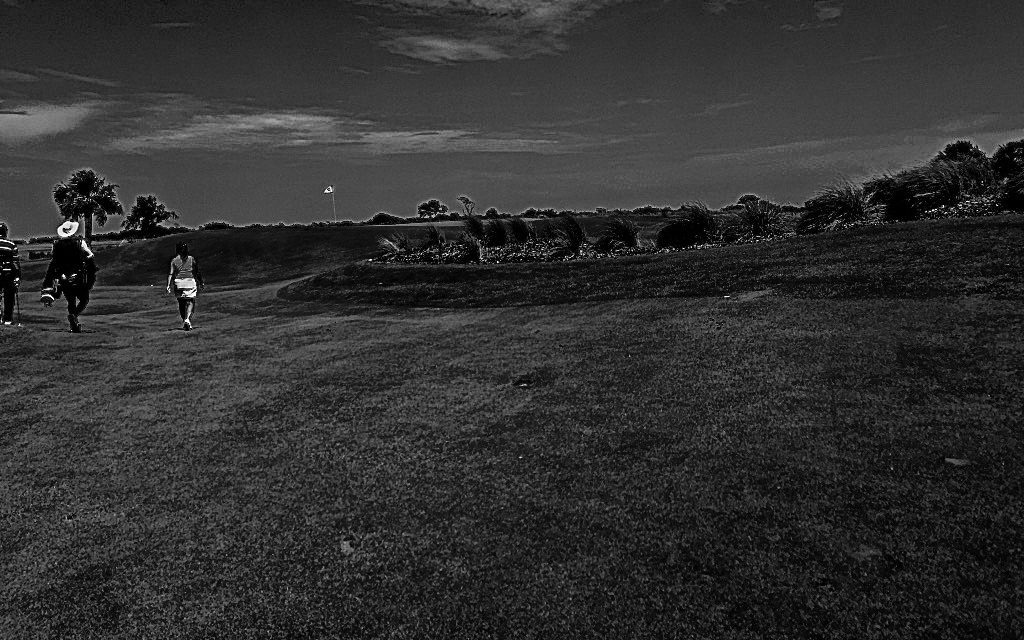BPBM’s boss, Ryan, played a bucket list round at Kiawah’s Ocean Course during 2017. Almost everything was perfect. Almost. Teeing off at No. 3, he was saddened to learn that the fairway live oak—the one he had played countless times via Xbox, the one that Rory McIlroy had gotten stuck during the 2012 PGA Championship—had fallen. Despite his par on the hole, that regret lingered, and he would pitch an obituary for the tree to The Golfer’s Journal. That narrow concept became an exploration of a species, a golf course, and especially of the man who designed it.
The brass at TGJ were kind enough allow us to publish the first section as a preview, and we wholeheartedly encourage you to pick up a copy of the Winter 2018 issue and read the rest. Not only because it’s an excellent publication—true, engaging feature stories…not wedge reviews… and exquisite photography—but because Ryan doesn’t really pick up steam until Part 4. Anyway, consider picking one up.
For now, enjoy Part 1 (note that edits may have been made for length in the actual, published version):
Maybe Rory McIlroy, then a 23-year-old still discovering the extent of his powers, wanted to show off for the swelling gallery. Maybe he smelled blood, just one stroke off the lead after consecutive birdies in a championship where a victory would make him the youngest player since Seve Ballesteros to own two major titles. Maybe, and perhaps most likely, the 71-yard change of distance from Thursday to Friday simply presented an irresistible target for one of the game’s longest hitters. Sitting 317 yards away, the green beckoned.
The Kiawah Ocean Course crawled with more than 30,000 spectators, and the 2012 PGA Championship welcomed 155 competitors to the field. But only one thing stood in McIlroy’s way. He pulled driver.
The ball, somehow, disappeared about 280 yards into its flight.

The Ocean Course leapfrogs between seas of waste bunkers and forced salt-marsh carries—Pete Dye’s typically sadistic additions to a strip of coastal land where average wind speeds already hover somewhere in the 25-mph range. The ocean, of course, is built into the course and its title, and the water generates the bulk of awe. Live oak trees—Southern standbys noted for their warped limbs and proclivity for Spanish moss—barely make an appearance in the reviews of amateur golf bloggers, much less the attack strategies of Tour pros, despite being designed right into the Kiawah Resort’s logo.
Going into the 2012 PGA Championship, even the staunchest of Mackenzie-conservatives could embrace the cavernous bunker greenside left at No. 16, or how the wind played with No. 14’s redan green. But if the lone live oak in the middle of No. 3’s fairway drew any attention at all, it was scorn.
“Pete can’t escape adding some amount of spectacle…and among all his great holes you get eyesores like that tree,” one contact confided when reached for this story.
Yet this lowly live oak had an opportunity for its 15 minutes of fame and seized it, snatching the McIlroy’s ball from the air and the golf’s world’s attention along with it.
As McIlroy and PGA of America officials scoured the wood chips and seagrass, broadcasters Nick Faldo and Gary McCord no doubt mimicked those viewing at home, yelling “Look up!” to those wandering on the ground.
Eventually, logic prevailed and McIlroy reached up to retrieve his ball. Undaunted, he took a drop 25 feet back from his newfound foe, launched a majestic lob over its outstretched arms, and made the 7-foot putt to save par.
Looking back on what would become a historic performance, the whole series of events seems like a mere speedbump for a future Hall of Famer who couldn’t be fazed on his way to an eight-stroke rout, breaking Jack Nicklaus’ previous PGA Championship record for margin of victory. Still, Dye might have smirked as McIlroy flashed a bit of frustration walking down to the No. 4 tee from the hole’s plateau green. He wanted no part of that tree ball, launching it into the salt marsh behind the hole.
McIlroy is no doubt planning to be there when the Ocean Course hosts the 2021 PGA Championship.
The tree will not.
Like we said, pick up an issue (or better yet, a subscription) at The Golfer’s Journal. It’s the kind of engaging storytelling that you won’t find on blogs like this one.